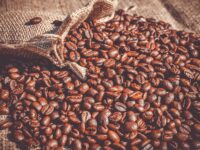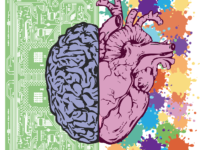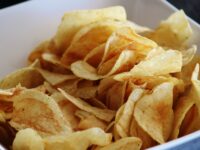If your bed seems like the ideal spot to munch on your favorite snack, or if a particular booth beckons to you every time you walk into your favorite diner, it’s probably because you already have some tasty memories associated with that location. Whether we like it or not, many of our autonomous “decisions” are actually governed by memories from past experiences that were sneakily stored away by our brains in order to be used again someday. The connections our noggins make between location and food are particularly important because, after all, we’re animals, and remembering where a good meal can be found is highly advantageous for our survival.
This may seem intuitive, but it doesn’t mean much in the world of science if there isn’t experimental evidence to back it up. A study conducted on rats that was published in April 2019 identified cells in the brain’s hippocampus (a major memory-making structure) that activate in response to both the body’s spatial position and tastes experienced at that location. This is an amazing discovery, but it wouldn’t have been possible without research on spatial mapping in the brain that began almost forty years ago.
In 1971, Master’s student Jonathan Dostrovsky and 2014 Nobel Prize laureate John O’Keefe published a study entitled “The hippocampus as a spatial map,” which has been cited in academic papers 2,997 times since its publication. Through observation of the rat hippocampus, O’Keefe discovered “place cells.” These neurons fire differently depending on the animal’s location, effectively creating a mental spatial representation of the environment it is currently inhabiting. Each place cell has a “place field,” which is the specific spatial position the organism must be in for the place cell to fire.
These neurons, “place cells”, fire differently depending on the animal’s location, effectively creating a mental spatial representation of the environment it is currently inhabiting.
In recent years, numerous studies have found that place cells in the hippocampus can also encode sensory information like odors, visual cues, auditory tones, textures, and time. When a place cell responds to such a stimulus, it produces a change in its firing rate on top of the firing rate it is initiating to signal spatial position.
A study conducted in 2019 recorded neuron activity in the CA1 region of the hippocampus, where many place cells are found, in five male rats. While measuring their brain activity, Herzog et al. gave the rats one of four water solutions, each with a different chemical added to elicit a certain taste — sweet, salty, bitter, and neutral (just water) — to observe the effect they would have on place cell activity. Each rat received every kind of solution in a random order, throughout many rounds. Out of the 395 place cells the scientists found in CA1, 58 (or 14.7 percent) of them were “taste-responsive.” It turns out that these place cells respond to a taste if it is administered within its place field — evidence of a connection being created by neurons, in real time, between place and taste. Furthermore, some place cells could distinguish between tastes, firing differently in response to a particular one. Of the neurons that responded strongly to one taste, the taste was usually either the most “palatable” (rewarding) or most aversive taste. This was perhaps the most significant finding of the experiment: place cells, which have long been understood only as spatial mapping cells, can additionally distinguish between tastes based on palatability.
It turns out that these place cells respond to a taste if it is administered within its place field — evidence of a connection being created by neurons, in real time, between place and taste.
With respect to other taste-responsive structures in the brain outside of the hippocampus, place cells react to palatability relatively late, most likely too late to produce immediate changes in the individual’s eating practices. Thus, their purpose must not be to change an organism’s behavior in real-time but to form more long-lasting associations between location and reward to help animals locate food sources in the future.
As the field of neuroscience exponentially grows and diverges into subfields, it becomes clearer that many brain structures have more functions than previously thought. This includes the hippocampus, which was first identified for its roles in memory and learning, later for its role in spatial mapping, and now for its role in feeding behavior. To have made it this far in evolutionary history, the human brain must have a plethora of neurological secrets we’ve yet to uncover. Hopefully one day, the progress of the field will allow us to understand our own complexity.
Brain Research (1971). DOI: 10.1016/0006–8993(71)90358–1
Annual Review of Neuroscience (2008). DOI: 10.1146/annurev.neuro.31.061307.090723
Trends in Neuroscience(2009). DOI: 10.1016/j.tins.2009.01.009
Journal of Neuroscience (2019). DOI: 10.1523/JNEUROSCI.2478–18.2019
Image source: Pixabay.






